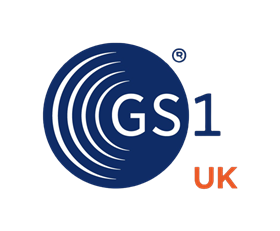At HSJ’s recent Digital Transformation Summit, board representatives from ICS and provider organisations came together to debate the most pressing issues confronting digital health leaders
The potential for digital transformation in healthcare has been the focus of several strategies and frameworks outlined by central NHS bodies. It is now seen as a key driver in enabling improved patient outcomes. However, the prospect of a system-wide scale up of digital maturity comes with challenges, at both local and national level. One such challenge stems from a lack of the interoperability needed to support digital transformation.
Sponsored by
In order to enhance patient care through digital transformation, healthcare providers need to be able to exchange vital patient information between relevant systems and to necessary teams when required. However, many providers are often limited by systems that are unable to share data within a single hospital or wider NHS trust, let alone across an integrated care system or a national database. This is where data standards demonstrate their value.
A plan for interoperability
By adopting data standards – such as GS1 standards – information can be captured in one format so it can be easily shared and recognised by other systems.
Noting this, digital leaders have highlighted the importance of ensuring solution providers are also on board, stating: “Electronic patient record systems need to talk to each other” and that “every solution provider [system] should be capable of using data standards”.
To reap the full benefits for patient care, data also needs to be uniquely identifiable. GS1 standards make this possible by uniquely identifying every person, every product, and every place, enabling products to be traced from manufacturer to patient. By scanning a GS1 barcode at the point of care or use, accurate data can be captured once and shared quickly to multiple systems as the standards are both system and device agnostic. The benefits of such an approach have been clearly demonstrated by the Scan4Safety initiative, proven to significantly reduce clinical errors, saving millions of pounds and thousands of hours across six demonstrator trust sites.
As the Cumberlege review highlights, data transparency is essential for offering the safest, most effective care to patients. It enables a clear and accurate chain of custody to be established for a patient’s care journey which makes it much easier to respond to safety incidents should an error or product recall occur.
Benefits to patient care
According to a report published in The British Medical Journal, more than 237 million medication errors are made every year in England. These largely preventable errors are estimated to have cost the NHS “upwards of £98 million and 1700+ lives every year”.
By scanning the medicine, the patient wristband, the staff badge, and location when dispensing and administering medications, it is possible to significantly lower instances of medication errors. This process is known as closed-loop medicines administration. At Royal Cornwall Hospitals Trust, it was able to reduce prevented-error rates by 76 per cent, including the elimination of all errors caused by wrong patient, wrong drug, wrong dose, and wrong form.
It also affords greater traceability in the event of a product recall. Since each product or device is uniquely identified, the GS1 barcode can be scanned at touchpoints throughout the supply chain and tracked to specific locations which are also uniquely identified. When ready for use, the product or device is scanned at the point of care and matched to the correct patient – identifiable via their unique patient wristband. If the product or device is then recalled, affected patients can be notified quickly and the product removed from circulation. For example, with point of care scanning in place at Leeds Teaching Hospitals Trust, the average time taken to process product recalls has fallen from 8.33 days to less than 35 minutes.
Yet, with the patient safety benefits standardised data and technology have to offer, digital leaders continue to face barriers to adoption. So, how can momentum for adopting standards be amplified nationally?
The key to a national approach
For digital leaders the answer is clear. Digital clinical safety and patient clinical safety need to join together rather than operating independently of each other. Regionally, integrated care boards can help organisations by appointing a clinical safety officer, while nationally, digital strategies must have standards included as a priority.
It will take a centralised approach to standards adoption, working together with suppliers and solution providers, to see these patient safety benefits translated across the health service.
Find out more
GS1 UK’s ambition is to make healthcare systems safer and more efficient through the power of data standards, freeing up staff time so they can do what they do best.
Hospitals around the world are realising the benefits of GS1 standards adoption. To learn more and get started, head to the GS1 UK website.


























